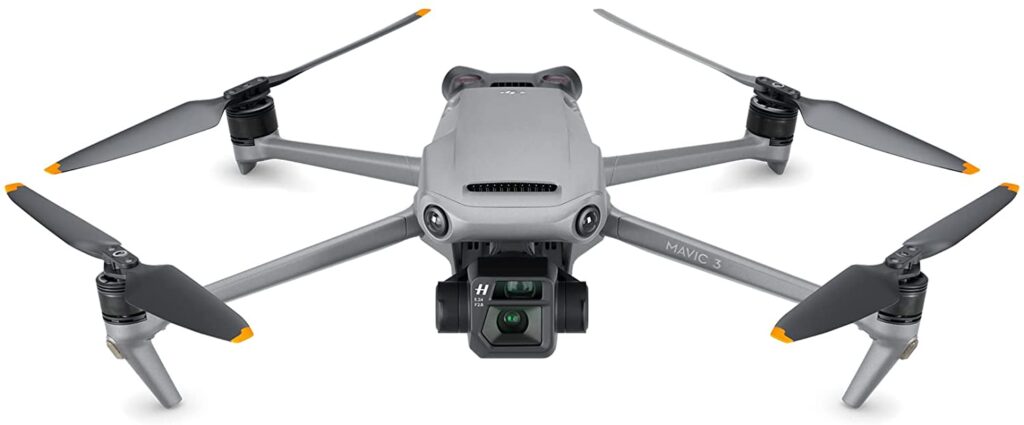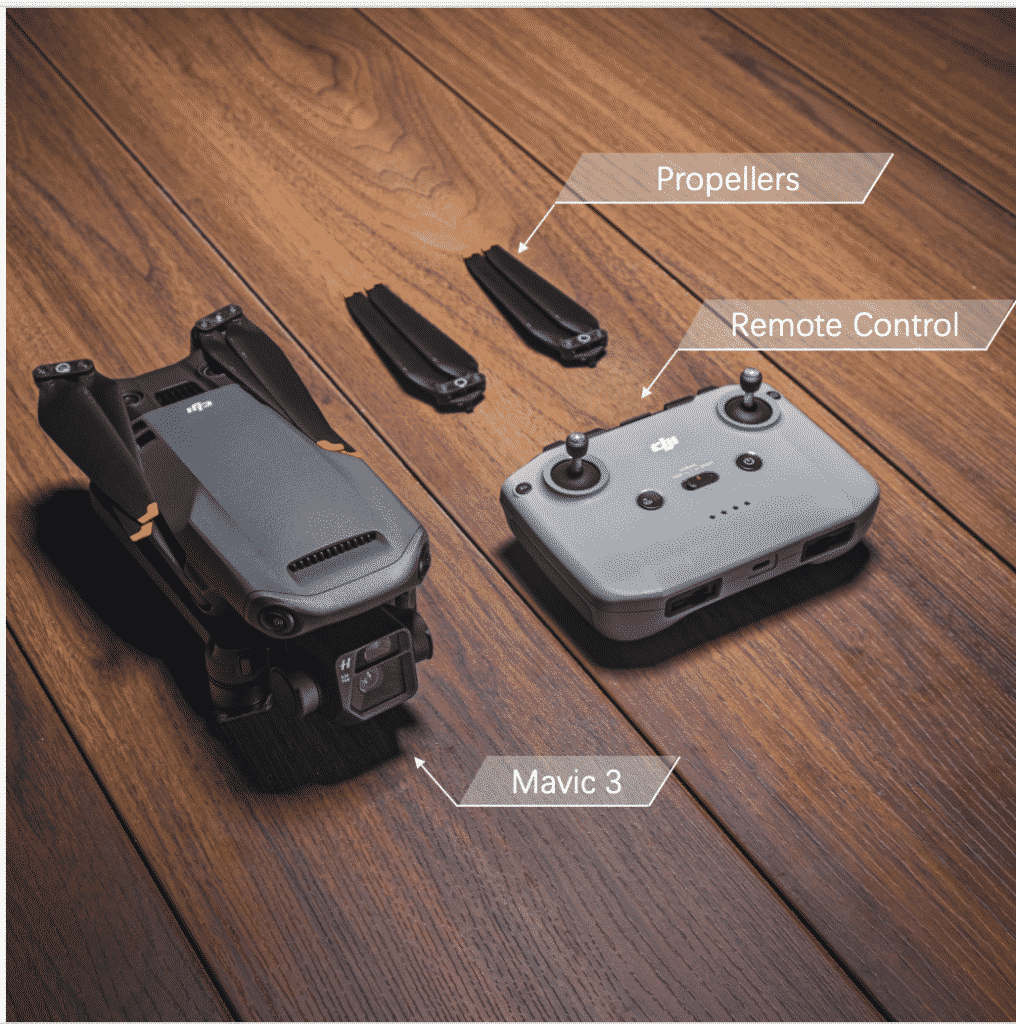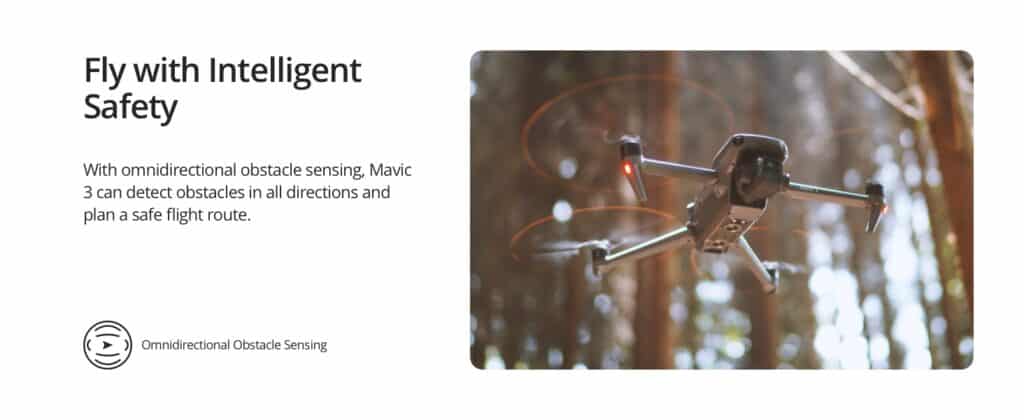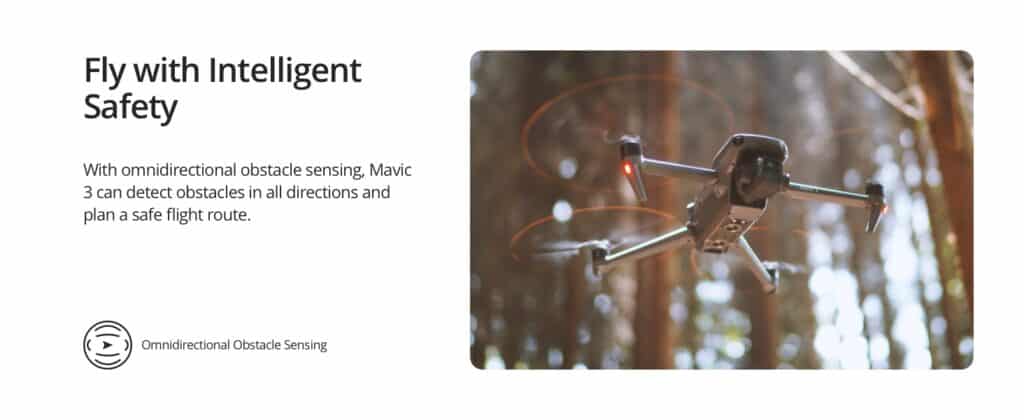The DJI Mavic 3 is the company’s most powerful folding drone to date, and it’s also the finest in terms of pure performance. However, the significant upgrades over the DJI Mavic 2 Pro come at a price. As a result, the smaller and more economical DJI Air 2S is the better all-around buy for most non-professionals.
The DJI Mavic 3 new dual-camera system, which has two separate sensors and lenses, is clearly the highlight. The main camera, for example, features a 20MP Four Thirds CMOS sensor with an adjustable aperture. This gives the greatest image quality in its class. The drone’s second telephoto lens has far fewer features, such as manual controls and raw shooting. Although it can be handy for capturing distant scenes on occasion.
The Mavic 3 comes in two different versions: standard and cine. Apart from pricing, the biggest difference between the two is that Cine has a built-in 1TB SSD instead of 8GB of internal storage. As well as support for Apple Pores 422 HQ video recording. For our evaluation. We chose the Cine Premium Combo, which has all of the same motion and stills photography options as the normal version except for the ability to shoot Apple Pores.
What will you see here?
Release date and price

The DJI Mavic 3 is now available to order in one of three settings. There’s a Standard version, as well as a Fly More Combo, which includes a variety of essential accessories (including two extra batteries) at a lower price than buying everything separately.
If you’re feeling flush, the Cine Premium Combo increases the drone’s storage to 1TB and includes all of the Fly More Combo accessories. As well as the new DJI RC Pro controller and two sets of ND filters.
The standard version of the Mavic 3 costs US$2,199 / £1,879 / AU$3,099. The Mavic 3 drone, one Intelligent Flight Battery, an RC-N1 Remote Controller, phone cables, a battery charger, and a storage case. And three pairs of propellers were included in this kit.
All of the previous, plus two more Intelligent Flight Batteries, three more pairs of propellers, and a charging hub for the batteries. An ND Filter Set (ND4/8/6/32), and a convertible carrying bag, are included in DJI Mavic 3 Fly More Combo. Which costs US$2,999 / £2,549 / AU$4199.
The DJI Mavic 3 Cine Premium Combo, on the other hand, costs US$4,999 / £4279 / AU$7199. This package contains everything in the Fly More Bundle, but the drone has a built-in 1TB SSD instead of 8Gb of storage and supports Apple. In addition to the RC-N1 Controller, a DJI RC Pro (with a built-in 5.5 screen) is included. As well as an additional ND Filter Set (ND64/128/256/512) and a DJI 10Gbps Lightspeed Data Cable.
Design and controller

The design of the Mavic 3 is the same as previous Mavic drones. When not in use, the engine arms fold inward, making the drone much smaller and more backpack-friendly.
The Mavic 3’s folded dimensions are 212 96.3×90.3mm, while its unfolded dimensions are 347.5283×107.7 mm. When folded, it’s similar to the Mavic 2 Pro, while the unfolded size is slightly larger.
This is less than the Mavic 2 Pro (907g). This is remarkable given that the Mavic 3’s battery is heavier and has a larger capacity of 5,000mAh compared to the Mavic 2’s 3,850mAh. Rather than being inserted into the top of the Mavic 3 body, the battery is inserted into the back.
The control sticks may be stowed away at the bottom when not in use. The Mavic 3 controller lacks the LCD screen that displays flight information seen on the Mavic 2. This is surprising given the Mavic 3’s greater price, however, this information can be found in the DJI Mavic 3 Fly app.
Features and flight:

The Mavic 3 is an agile drone with substantially better flight response than its Mavic 2 predecessors. In this regard, it resembles the DJI Mavic 3 Phantom 4 Pro V2.0 more. The controls are just more sensitive in both Normal and Sport Modes. Cine Mode, on the other hand, lowers control intensity and speed for nicer landings and more dramatic video footage.
Flight can be as quick or as slow as you want it to be. While the Mavic 3’s features and pricing make it more suitable for expert drone pilots and professional video makers. Thanks to its advanced safety features and popular Quick shots flight modes. DJI Mavic 3 might also serve as an entry point for beginners.
Flight may be as fast or as slow as you wish. The Mavic 3’s increased safety features and popular Quick shots flight modes make it more suitable for experienced drone pilots and professional video creators. But it might also serve as an entry point for newcomers.
Obstacle avoidance was improved in the December firmware update. The Mavic 3 flew erratically when flying through a dense canopy of trees. And if it hadn’t been stopping. It could have fallen into tree branches. Nevertheless, this was a really difficult test, and when APAS was disabled. The drone was able to fly much more gently, but with a far larger risk of crashing. With the fantastic onboard technologies, it would be great to see future firmware updates increase obstacle avoidance even more.
Video and photo quality

The dual Hasselblad camera in the Mavic 3 is its proudest feat. The primary camera sports a 20MP Four Thirds CMOS sensor and an equivalent focal length of 24mm.
This camera is like the Mavic 2 Pro and comes with an f/2.8 to f/11 aperture. However, we can change the aperture. In addition, preset and adjustable focus from 1m to eternity is available. The second camera has a 1/2-inch CMOS sensor, a fixed f/4.4 aperture, and a 28x hybrid zoom with an equivalent focal length of 162mm.
When viewing stills, the image quality of DJI Mavic 3 from the primary camera is nothing short of outstanding. With only a minor bit of sharpness going off towards the corners of the picture. However, the amount of fall-off is minor, and you must seek it. It’s also a lot better than the picture fall-off seen with the DJI Air 2S.
Even in high-contrast scenarios, there was no chromatic aberration around subject boundaries. And high ISO noise management is likewise good, with useable results across the whole range. Even though light grain becomes obvious at ISO 800.
Because the Four Thirds sensor is still tiny in comparison to a full-frame camera. The adjustable aperture of the Mavic 3 is more effective at regulating exposure than depth-of-field. When shooting video. However, the ability to regulate the aperture is a terrific feature since it allows you to make exposure changes fast in the air while keeping the shutter speed at a specific level.
Conclusion
It features a bigger sensor that operates well, thus it’s a significant improvement in image quality. The extended battery life makes planning easier, and the drone is extremely steady, even in wind. Gives you the impression that you’re flying on a tripod. It has problems, to be sure, but the visual quality benefits exceed them for me.
Read more!
- Exciting stuff to notice at Time Flies Event 2020-What’s new to check out!
- Best kids drones to let your children fly high!
- Best Vlogging cameras- For our enthusiast vloggers out there!
- iPhone 13 vs iPhone 12- Which one to go for?
- Best Apple Watch Bands for Men in 2021- Personalize your Apple Watch!














